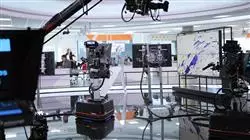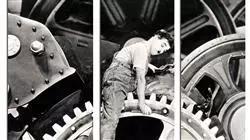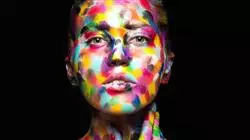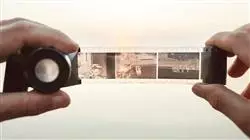University certificate
The world's largest faculty of journalism and communication”
Introduction to the Program
Knows the codes and specific work territories in which the use of images in the audiovisual sector moves"

Audiovisual communication has its greatest power in the use of the image. Its capacity to transmit information moves at different levels and provides a contingent of data that are perceived on different planes.
Apparently, this use of the image is simple. But, in practice, the keys that determine the impact it produces on message receivers and the success of the product as a final result are directly affected by the handling of these keys and their practical application.
Professionals in this area need to know this field and carry out a complete analysis of the image in the audiovisual context in order to be able to provide their audiovisual projects with the sought-after impact with the solvency of the best in the sector
All the aspects that the audiovisual professional should know about the use of images in the audiovisual media"
This Postgraduate diploma in Image Analysis offers you the characteristics of a program of high educational and technological level. These are some of its most notable features:
- The latest technology in online teaching software
- A highly visual teaching system, supported by graphic and schematic contents that are easy to assimilate and understand
- Practical cases presented by practising experts
- State-of-the-art interactive video systems
- Teaching supported by telepractice
- Continuous updating and recycling systems
- Autonomous learning: full compatibility with other occupations
- Practical exercises for self-evaluation and learning verification
- Support groups and educational synergies: questions to the expert, debate and knowledge forums
- Communication with the teacher and individual reflection work
- Availability of content from any device, fixed or portable, with Internet connection
- Supplementary documentation databases are permanently available, even after the program
We don't settle for theory: we take you to the most practical and competent know-how"
Our teaching staff is made up of working professionals. In this way TECH ensures to offer you the updating objective it intends. A multidisciplinary team of professors trained and experienced in different environments, who will develop theoretical knowledge in an efficient way, but, above all, will bring their practical knowledge derived from their own experience to the course: one of the differential qualities of this training.
This mastery of the subject is complemented by the effectiveness of the methodology used in the design of this course. Developed by a multidisciplinary team of e-Learning experts, it integrates the latest advances in educational technology. In this way, students will be able to study with a range of convenient and versatile multimedia tools that will give them the operational skills they need for their qualification.
The design of this program is based on Problem-Based Learning: an approach that views learning as a highly practical process. To achieve this remotely, TECH will use telepractice: with the help of an innovative interactive video system, and learning from an expert , the student will be able to acquire the knowledge as if they were facing the scenario being learned at that moment. A concept that will allow students to integrate and memorize what they have learnt in a more realistic and permanent way.
The forms of Image Analysis and the interpretation of its message, in a program of high interest for the professional of this field”

A practical and real program that will allow you to advance gradually and safely”
Syllabus
The syllabus of the program is structured as a comprehensive tour through each and every one of the concepts required to understand and work in this field. With an approach focused on practical application that will allow the student to grow as a professional from the first moment of training

A comprehensive syllabus focused on acquiring knowledge and converting it into real skills, created to propel you to excellence"
Module 1. Visual Communication
1.1. Visual Communication
1.1.1. Introduction
1.1.2. Visual Communication and Visual Literacy
1.1.2.1. Learning Visual Culture
1.1.2.2. Natural Language or Arbitrary Language
1.1.3. Qualities of Visual Communication
1.1.3.1. Immediacy
1.1.3.2. Basic Rules for Bibliographic Selection, Verification, Citation and Referencing
1.1.3.3. Degree of Complexity of the Message
1.1.4. Definition of Visual Communication
1.2. Graphic Design
1.2.1. Introduction
1.2.2. The Design
1.2.3. Graphic Design
1.2.3.1. Graphics
1.2.3.2. Design and Art
1.2.4. Graphic Design and Communication
1.2.5. Areas of Application of Graphic Design
1.3. Background and Evolution of Visual Communication
1.3.1. Introduction
1.3.2. The Problem of the Origin
1.3.3. Prehistory
1.3.4. The Ancient Age
1.3.4.1. Greece
1.3.4.2. Rome
1.3.5. The Middle Ages
1.3.6. The Renaissance: The Rise of the Printing Press in Europe
1.3.7. From the XVI to the XVIII Century
1.3.9. The XIX Century and the First Half of the XX Century
1.4. The Meaning of Visual Messages
1.4.1. Introduction
1.4.2. The Image, the Signifying Object
1.4.3. The Representational Quality of the Image: Iconicity
1.4.3.1. Type, Pattern and Form
1.4.4. The Plastic Quality of the Image
1.4.4.1. The Plastic Sign
1.4.5. The Symbolic Quality
1.4.6. Other Visual Codes
1.5. Persuasion
1.5.1. Introduction
1.5.2. Advertising Persuasion
1.5.3. Features
1.6. Elements Related to Image Representation
1.6.1. Introduction
1.6.2. Elements Related to Image Representation
1.6.3. The Articulation of Image Representation
1.6.3.1. The Concept of Representation
1.6.3.2. The Articulation of Representation
1.6.3.3. The Plastic Significance
1.6.4. Morphological Elements of the Image
1.6.5. Scalar Elements of the Image
1.6.5.1. Size
1.6.5.2. The Scale
1.6.5.3. The Proportion
1.6.5.4. The Format
1.7. The Composition
1.7.1. Introduction
1.7.2. Composition or Visual Syntax
1.7.3. The Balance
1.7.4. Dynamic Elements of Representation
1.7.5. Normative Composition
1.8. Color and Light
1.8.1. Introduction
1.8.2. Light, Color and Perception
1.8.2.1. Light and the Visible Color Spectrum
1.8.2.2. The Perception of Light and Colors
1.8.2.3. The Adaptive Capacity of the Perceptual System
1.8.2.4. Color Temperature of a Light Source
1.8.3. Primary Colors
1.8.4. Basic Color Reproduction Techniques
1.8.5. Color Dimensions
1.8.6. Harmony Types and Pallet Construction
1.8.7. Plastic Functions of Color
1.9. Typography
1.9.1. Introduction
1.9.2. Formal Structure and Type Measurement
1.9.3. Classification of Typefaces
1.9.4. The Composition of the Text
1.9.5. Issues Affecting Readability
1.10. Editorial Design and Infographics
1.10.1. Introduction
1.10.2. Editorial Design
1.10.3. Infographics
1.10.4. Journalistic Design Functions
1.10.5. Final Note on the Term Journalistic Design
1.10.6. Arbitrariness or Naturalness of Journalistic Design
1.10.7. Articulation of the Visual Language of Journalistic Design
Module 2. Audiovisual Image Analysis
2.1. Theoretical Foundations and Methodology of Analysis
2.1.1. Differences between Film Criticism and Film Analysis: The Scientific Method
2.1.2. Criteria of Film Criticism (Laurent Jullier)
2.1.3. Preparation of the Audiovisual Analysis: The Selection of the Elements of Analysis
2.1.4. Techniques for Audiovisual Analysis: The Audiovisual Image as Language
2.1.5. Phases of Audiovisual Analysis
2.2. Film Analysis: Instruments and Methods I
2.2.1. The Proposal of Jaques and Michel Marie Aumont
2.2.2. The Proposal of Francesco Casetti and Federico di Chio
2.3. Film Analysis: Equipment and Methods II
2.3.1. Film Analysis According to David Bordwell
2.4. The Historical Approach to Film Analysis
2.4.1. Traditional Approaches
2.4.2. The Proposal of Robert Allen and David Gomery
2.4.3. Case Studies
2.5. The Analysis of the Cinematographic Image
2.5.1. The Spatial Verisimilitude and Planning for Dramatic and Psychological Purposes of the Classical Model
2.5.2. Identification Processes. Psycho (Alfred Hitchcock, 1960)
2.5.3. Other Case Studies from an Aesthetic Approach
2.6. Cultural Approach to the Analysis of Film Image
2.6.1. Film Analysis and Popular Culture
2.6.2. Postmodern Masculinities
2.6.3. Constructing the Woman
2.6.4. Gender, Ethnicity and Sexuality in the Construction of Identity
2.6.5. Conclusions of the Study
2.7. Analysis of the Televised Image
2.7.1. From the First Cult Series to the Emergence of HBO
2.7.2. General Issues in Contemporary Television Fiction
2.7.3. The Sopranos and the Sophistication of Fiction Series
2.7.4. 24 (Joel Surnow and Robert Cochran, 2001-2010): Innovation in Television Narrative
2.7.5. Realism in The Wire (D. Simon and E. Burns, 2002-2008)
2.7.6. Breaking Bad (Vince Gilligan, 2008-2011)
2.8. The Historical Approach to Television Analysis
2.8.1. The Usefulness of Television Analysis from a Historical Perspective
2.8.2. Case Studies
2.8.3. Mad men (Mathew Weiner, 2007-2015). Different Approaches to Analysis: Historical Perspective, Representation of Women, Analysis of Staging and Artistic Direction, Narrative Analysis, and Character Construction
2.9. Analysis of Audiovisual News
2.9.1. Analysis of Informative Audiovisual Products
2.10. Advertising Image Analysis
2.10.1. Analysis of Persuasive Audiovisual Products
Module 3. Introduction to the Psychology of Communication
3.1. History of Psychology
3.1.1. Introduction
3.1.2. We Begin with the Study of Psychology
3.1.3. Science in Evolution. Historical and Paradigmatic Changes
3.1.4. Paradigms and Stages in Psychology
3.1.5. Cognitive Science
3.2. Social Psychology
3.2.1. Introduction
3.2.2. Beginning with the Study of Social Psychology: The Influence of Social Psychology
3.2.3. Empathy, Altruism and Helping Behavior
3.3. Social Cognition
3.3.1. Introduction
3.3.2. Thinking and Knowing, Vital Necessities
3.3.3. Social Cognition
3.3.4. Organizing Information
3.3.5. Prototypical or Categorical Thinking
3.3.6. The Mistakes We Make in Thinking: Inferential Biases
3.3.7. Automatic Information Processing
3.4. Personality Psychology
3.4.1. Introduction
3.4.2. What is the Self? Identity and Personality
3.4.3. Self-awareness
3.4.4. Self-esteem
3.4.5. Self-knowledge
3.4.6. Interpersonal Variables in Personality Shaping
3.4.7. Macro-social Variables in the Configuration of Personality
3.4.8. A New Perspective in the Study of Personality. Narrative Personality
3.5. Emotions
3.5.1. Introduction
3.5.2. What do we Talk about When we Get Excited?
3.5.3. The Nature of Emotions
3.5.4. Emotion as Preparation for Action
3.5.5. Emotions and Personality
3.5.6. From another Perspective. Social Emotions
3.6. Psychology of Communication. Persuasion and Attitude Change
3.6.1. Introduction
3.6.2. Attitudes
3.6.3. Historical Models in the Study of Persuasive Communication
3.6.4. The Probability of Elaboration Model
3.6.5. Communication Processes through the Media
3.6.5.1. A Historical Perspective
3.7. The Sender
3.7.1. Introduction
3.7.2. The Source of Persuasive Communication
3.7.3. Source Characteristics. Credibility
3.7.4. Source Characteristics. The Appeal
3.7.5. Emitter Characteristics. The Power
3.7.6. Processes in Persuasive Communication. Mechanisms Based on Primary Cognition
3.7.7. New Processes in Communication. Mechanisms Based on Secondary Cognition
3.8. The Message
3.8.1. Introduction
3.8.2. We Begin by Studying the Composition of the Message
3.8.3. Types of Messages: Rational vs. Emotional Messages
3.8.4. Emotional Messaging and Communication: Fear Inducing Messages
3.9. The Receiver
3.9.1. Introduction
3.9.2. The Role of the Recipient According to the Elaboration Probability Model
3.9.3. Recipient Needs and Motives: Their Impact on Attitude Change
3.9.4. Need for Esteem and Communication
3.10. New Approaches to the Study of Communication
3.10.1. Introduction
3.10.2. Non-conscious Processing of Information. Automatic Processes
3.10.3. Measuring Automatic Processes in Communication
3.10.4. First Steps in the New Paradigms
3.10.5. Theories of Dual Processing Systems
3.10.5.1. Main Limitations of Dual Systems Theories

Postgraduate Diploma in Image Analysis
.
Discover the exciting world of image analysis with our Postgraduate Diploma in Image Analysis program, offered online by TECH Global University. If you are interested in acquiring specialised skills in image analysis and understanding in a variety of fields, this program is perfect for you. At TECH Global University, we understand the importance of image analysis in multiple industries and disciplines, such as art, medicine, advertising and scientific research. Our Postgraduate Diploma program will give you the tools you need to interpret and extract valuable information from images, using advanced techniques and cutting-edge technology. In this program, you will explore the fundamentals of image analysis, including key concepts such as image acquisition, digital processing, segmentation, pattern recognition and data visualisation. You will learn how to use specialised software and tools to perform accurate analysis and obtain meaningful results. The Postgraduate Diploma in Image Analysis focuses on practical applications in a variety of fields, such as anomaly detection in medical images, facial recognition, object classification and satellite image interpretation. You will acquire skills that will enable you to solve complex problems and make decisions based on information obtained from analysed images.
Enrol now and start online
.
Our program is taught online, giving you the flexibility to study from anywhere and at your own pace. You'll be provided with high-quality learning materials, interactive resources and guidance from experts in the field of image analysis. You will also have the opportunity to interact with other professionals and expand your network. Become an expert in image analysis and expand your career opportunities in fields such as scientific research, medicine, graphic design, security and more. Choose TECH Global University to boost your career in image analysis - enrol in our Postgraduate Diploma program and gain skills that will make a difference in today's visual world!







